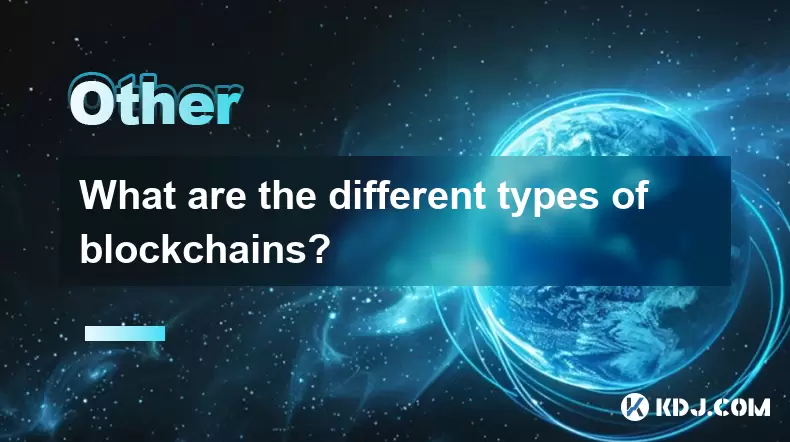-
 Bitcoin
Bitcoin $112400
-1.07% -
 Ethereum
Ethereum $3409
-3.27% -
 XRP
XRP $2.784
-6.60% -
 Tether USDt
Tether USDt $0.9997
-0.03% -
 BNB
BNB $739.3
-2.09% -
 Solana
Solana $158.0
-2.90% -
 USDC
USDC $0.9998
-0.02% -
 TRON
TRON $0.3213
-0.94% -
 Dogecoin
Dogecoin $0.1929
-5.01% -
 Cardano
Cardano $0.6974
-2.82% -
 Hyperliquid
Hyperliquid $36.69
-2.31% -
 Sui
Sui $3.327
-4.80% -
 Stellar
Stellar $0.3672
-5.18% -
 Chainlink
Chainlink $15.65
-3.07% -
 Bitcoin Cash
Bitcoin Cash $525.0
-1.68% -
 Hedera
Hedera $0.2291
-6.00% -
 Avalanche
Avalanche $20.91
-2.96% -
 Ethena USDe
Ethena USDe $1.000
0.00% -
 Toncoin
Toncoin $3.520
-1.12% -
 UNUS SED LEO
UNUS SED LEO $8.968
0.14% -
 Litecoin
Litecoin $105.7
0.26% -
 Shiba Inu
Shiba Inu $0.00001181
-1.79% -
 Polkadot
Polkadot $3.492
-2.08% -
 Uniswap
Uniswap $8.800
-3.10% -
 Dai
Dai $0.9999
-0.01% -
 Monero
Monero $289.9
-3.17% -
 Bitget Token
Bitget Token $4.243
-1.27% -
 Pepe
Pepe $0.00001006
-3.67% -
 Cronos
Cronos $0.1248
-5.68% -
 Aave
Aave $249.7
-2.50%
How to achieve cross-chain interoperability in blockchain development?
Cross-chain interoperability enables blockchain networks to communicate and transact, crucial for growth and scalability, using notary schemes, sidechains, and hash-locking.
Apr 17, 2025 at 03:15 am

Introduction to Cross-Chain Interoperability
Cross-chain interoperability refers to the ability of different blockchain networks to communicate, share data, and execute transactions with one another. Achieving this interoperability is crucial for the growth and scalability of blockchain technology, as it allows for greater flexibility and efficiency in decentralized applications. In this article, we will explore various methods and technologies used to achieve cross-chain interoperability in blockchain development.
Understanding the Need for Cross-Chain Interoperability
The blockchain ecosystem is composed of various networks, each with its own set of rules, protocols, and functionalities. Without interoperability, these networks operate in isolation, limiting the potential for collaboration and innovation. For example, a user might want to transfer assets from one blockchain to another, or a decentralized application might need to access data from multiple blockchains. Cross-chain interoperability addresses these challenges by enabling seamless interactions between different blockchain networks.
Types of Cross-Chain Interoperability Solutions
Several approaches have been developed to achieve cross-chain interoperability. These solutions can be broadly categorized into three main types: notary schemes, sidechains/relays, and hash-locking.
Notary Schemes: In notary schemes, a group of trusted parties or nodes acts as intermediaries to facilitate transactions between different blockchains. These notaries validate and confirm transactions, ensuring that the transfer of assets or data is secure and accurate.
Sidechains and Relays: Sidechains are separate blockchains that are pegged to a main blockchain, allowing for the transfer of assets between the two. Relays are similar but involve the use of a third-party blockchain to facilitate communication between two primary blockchains. Both methods enable the movement of assets and data across different networks.
Hash-Locking: Hash-locking involves the use of cryptographic hash functions to lock assets on one blockchain until a specific condition is met on another blockchain. This method ensures that transactions are executed atomically, meaning they either occur completely or not at all, thus maintaining the integrity of the transfer process.
Implementing Cross-Chain Interoperability with Notary Schemes
To implement cross-chain interoperability using notary schemes, developers need to follow a series of steps:
Select Trusted Notaries: Identify a group of trusted nodes or parties that will act as notaries. These notaries should be reputable and have a stake in maintaining the integrity of the system.
Establish Communication Protocols: Develop protocols that allow the notaries to communicate with both blockchains involved in the transaction. This may involve setting up APIs or other communication channels.
Validate Transactions: When a user initiates a cross-chain transaction, the notaries validate the transaction details on both blockchains. This includes checking the sender's balance, transaction fees, and other relevant data.
Confirm and Execute: Once the transaction is validated, the notaries confirm the transaction on both blockchains. The assets or data are then transferred, and the transaction is recorded on both networks.
Monitor and Maintain: Continuously monitor the notaries' performance and maintain the system to ensure that it remains secure and efficient.
Implementing Cross-Chain Interoperability with Sidechains and Relays
Implementing cross-chain interoperability using sidechains and relays involves the following steps:
Design the Sidechain or Relay: Determine the architecture of the sidechain or relay, including its consensus mechanism, block structure, and communication protocols with the main blockchain.
Establish Pegging Mechanism: Develop a pegging mechanism that allows assets to be locked on the main blockchain and minted on the sidechain or relay. This ensures that the total supply of assets remains constant across both networks.
Set Up Communication Channels: Create communication channels between the main blockchain and the sidechain or relay. This may involve setting up APIs, smart contracts, or other methods of data exchange.
Validate and Execute Transactions: When a user initiates a cross-chain transaction, validate the transaction details on both the main blockchain and the sidechain or relay. Once validated, execute the transaction by locking assets on the main blockchain and minting them on the sidechain or relay.
Monitor and Maintain: Continuously monitor the performance of the sidechain or relay and maintain the system to ensure that it remains secure and efficient.
Implementing Cross-Chain Interoperability with Hash-Locking
To implement cross-chain interoperability using hash-locking, developers need to follow these steps:
Generate Hash Locks: When a user initiates a cross-chain transaction, generate a cryptographic hash lock based on the transaction details. This hash lock will be used to lock assets on one blockchain until the transaction is completed on the other blockchain.
Lock Assets on Source Blockchain: Lock the assets on the source blockchain using the generated hash lock. This ensures that the assets cannot be moved until the transaction is completed on the destination blockchain.
Initiate Transaction on Destination Blockchain: Initiate the transaction on the destination blockchain, including the hash lock as a condition for the transaction to be executed.
Validate and Execute: Once the transaction is validated on the destination blockchain, execute the transaction and unlock the assets on the source blockchain. This ensures that the transaction is completed atomically, maintaining the integrity of the transfer process.
Monitor and Maintain: Continuously monitor the performance of the hash-locking system and maintain it to ensure that it remains secure and efficient.
Challenges and Considerations in Cross-Chain Interoperability
While cross-chain interoperability offers numerous benefits, it also presents several challenges and considerations that developers must address:
Security: Ensuring the security of cross-chain transactions is paramount. Developers must implement robust security measures to protect against potential vulnerabilities and attacks.
Scalability: As the number of cross-chain transactions increases, the system must be able to scale to handle the increased load. This may involve optimizing the architecture and protocols used for interoperability.
Interoperability Standards: Developing and adhering to interoperability standards can help ensure that different blockchain networks can communicate effectively. This may involve participating in industry consortia or working groups to establish common standards.
User Experience: Providing a seamless user experience is crucial for the adoption of cross-chain interoperability solutions. Developers must design user-friendly interfaces and streamline the process of initiating and completing cross-chain transactions.
Frequently Asked Questions
Q: What are the main benefits of cross-chain interoperability in blockchain development?
A: The main benefits of cross-chain interoperability include increased flexibility and efficiency in decentralized applications, the ability to transfer assets and data between different blockchain networks, and the potential for greater collaboration and innovation within the blockchain ecosystem.
Q: How does cross-chain interoperability impact the security of blockchain networks?
A: Cross-chain interoperability can introduce new security risks, as it involves the interaction between different blockchain networks. However, by implementing robust security measures and adhering to best practices, developers can mitigate these risks and ensure the security of cross-chain transactions.
Q: Can cross-chain interoperability be achieved without the use of intermediaries?
A: Yes, cross-chain interoperability can be achieved without intermediaries through the use of technologies such as hash-locking. This method allows for the atomic execution of transactions across different blockchains without the need for trusted third parties.
Q: What role do interoperability standards play in achieving cross-chain interoperability?
A: Interoperability standards play a crucial role in achieving cross-chain interoperability by providing a common framework for different blockchain networks to communicate and interact. By adhering to these standards, developers can ensure that their solutions are compatible with other networks, facilitating seamless cross-chain transactions.
Disclaimer:info@kdj.com
The information provided is not trading advice. kdj.com does not assume any responsibility for any investments made based on the information provided in this article. Cryptocurrencies are highly volatile and it is highly recommended that you invest with caution after thorough research!
If you believe that the content used on this website infringes your copyright, please contact us immediately (info@kdj.com) and we will delete it promptly.
- BlockDAG, SEI, Ethena: Top Crypto Performers Under the Microscope
- 2025-08-03 10:50:16
- Bitcoin Blasts Past $119K: How Institutional Adoption and Macro Shifts Fuel the Fire
- 2025-08-03 10:55:16
- Crypto, Grok, and August: Decoding the Latest Trends and Insights
- 2025-08-03 11:10:16
- Crypto, Phishing, and Your Wallet: A New Yorker's Guide to Staying Safe
- 2025-08-03 10:30:16
- Troller Cat Meme Coin Presale Soars: A New King in the Crypto Jungle?
- 2025-08-03 10:30:16
- Grayscale, Altcoin Trust, and Mid-Cap Mania: What's the Deal?
- 2025-08-03 08:50:16
Related knowledge

What is the difference between on-chain and off-chain transactions?
Aug 02,2025 at 04:22pm
Understanding On-Chain TransactionsOn-chain transactions refer to digital asset transfers that are recorded directly on a blockchain ledger. These tra...

What is the double-spending problem and how does blockchain prevent it?
Aug 02,2025 at 01:07pm
Understanding the Double-Spending ProblemThe double-spending problem is a fundamental challenge in digital currency systems where the same digital tok...

What is the difference between a blockchain and a database?
Aug 01,2025 at 09:36pm
Understanding the Core Structure of a BlockchainA blockchain is a decentralized digital ledger that records data in a series of immutable blocks linke...

How does blockchain handle scalability?
Aug 02,2025 at 02:58pm
Understanding Blockchain Scalability ChallengesBlockchain scalability refers to a network's ability to handle an increasing volume of transactions wit...

What are the different types of blockchains?
Aug 03,2025 at 03:01am
Public Blockchains: Open and Decentralized NetworksPublic blockchains are the most widely recognized type of blockchain, characterized by their open a...

What is a hash in a blockchain?
Aug 02,2025 at 05:28am
Understanding the Concept of Hash in BlockchainA hash in the context of blockchain technology refers to a unique digital fingerprint generated by a cr...

What is the difference between on-chain and off-chain transactions?
Aug 02,2025 at 04:22pm
Understanding On-Chain TransactionsOn-chain transactions refer to digital asset transfers that are recorded directly on a blockchain ledger. These tra...

What is the double-spending problem and how does blockchain prevent it?
Aug 02,2025 at 01:07pm
Understanding the Double-Spending ProblemThe double-spending problem is a fundamental challenge in digital currency systems where the same digital tok...

What is the difference between a blockchain and a database?
Aug 01,2025 at 09:36pm
Understanding the Core Structure of a BlockchainA blockchain is a decentralized digital ledger that records data in a series of immutable blocks linke...

How does blockchain handle scalability?
Aug 02,2025 at 02:58pm
Understanding Blockchain Scalability ChallengesBlockchain scalability refers to a network's ability to handle an increasing volume of transactions wit...

What are the different types of blockchains?
Aug 03,2025 at 03:01am
Public Blockchains: Open and Decentralized NetworksPublic blockchains are the most widely recognized type of blockchain, characterized by their open a...

What is a hash in a blockchain?
Aug 02,2025 at 05:28am
Understanding the Concept of Hash in BlockchainA hash in the context of blockchain technology refers to a unique digital fingerprint generated by a cr...
See all articles

























































































